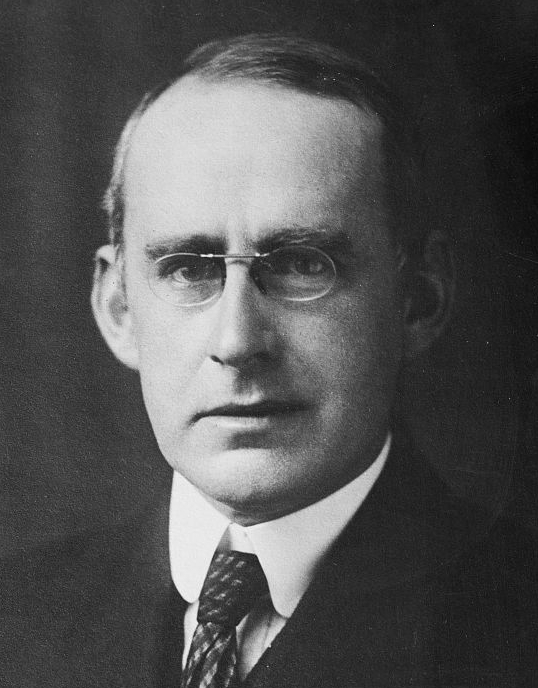„Ничего нет более простого, чем звезда.“
цит. по Иосиф Самуилович Шкловский И. С. Шкловский. Звёзды: их рождение и смерть
А́ртур Стэ́нли Э́ддингтон — английский астрофизик.

„Ничего нет более простого, чем звезда.“
цит. по Иосиф Самуилович Шкловский И. С. Шкловский. Звёзды: их рождение и смерть
...The present revolution of scientific thought follows in natural sequence on the great revolutions at earlier epochs in the history of science. Einstein's special theory of relativity, which explains the indeterminateness of the frame of space and time, crowns the work of Copernicus who first led us to give up our insistence on a geocentric outlook on nature; Einstein's general theory of relativity, which reveals the curvature or non-Euclidean geometry of space and time, carries forward the rudimentary thought of those earlier astronomers who first contemplated the possibility that their existence lay on something which was not flat. These earlier revolutions are still a source of perplexity in childhood, which we soon outgrow; and a time will come when Einstein's amazing revelations have likewise sunk into the commonplaces of educated thought.
«Теория относительности и ее влияние на научную мысль»
At terrestrial temperatures matter has complex properties which are likely to prove most difficult to unravel; but it is reasonable to hope that in the not too distant future we shall be competent to understand so simple a thing as a star.
парафраз окончания: Ничего нет более простого, чем звезда.
Source: Шкловский И. С. Звёзды: их рождение, жизнь и смерть. — М.: Наука, 1975.
«Внутреннее строение звёзд» (The Internal Constitution of Stars), 1926
Источник: Science and the Unseen World (1929), Ch. VIII, p.79
Источник: The Nature of the Physical World (1928), Ch. 4 The Running-Down of the Universe
The Internal Constitution of Stars, Cambridge. (1926). ISBN 0521337089
Paraphrased variants: It is sound judgment to hope that in the not too distant future we shall be competent to understand so simple a thing as a star.
It is not too much to hope that in the not too distant future we shall be competent to understand so simple a thing as a star.
Science and the Unseen World (1929)
III, p.36
Science and the Unseen World (1929)
Stars and Atoms (1927); lecture 1
New Pathways in Science (1935) Ch. IV The End of the World, p. 62
p, 125
Space, Time and Gravitation (1920)
Источник: Science and the Unseen World (1929), Ch. V, p.53
“The quest of the absolute leads into the four-dimensional world.”
Источник: The Nature of the Physical World (1928), Ch. 2 Relativity
“Proof is the idol before whom the pure mathematician tortures himself.”
Источник: The Nature of the Physical World (1928), Ch. 15 Science and Mysticism
p, 125
Space, Time and Gravitation (1920)
The Nature of the Physical World (1928)
The Internal Constitution of Stars, Cambridge. (1926). ISBN 0521337089
“Physics most strongly insists that its methods do not penetrate behind the symbolism.”
III, p.36
Science and the Unseen World (1929)
That is an excellent description of Pure Mathematics, which has already been given by an eminent mathematician <nowiki>[</nowiki>Bertrand Russell<nowiki>]</nowiki>.
Space, Time and Gravitation (1920)
“The whole subject-matter of exact science consists of pointer readings and similar indications.”
Источник: The Nature of the Physical World (1928), Ch. 10 The New Quantum Theory <!-- p. 219 -->
Science and the Unseen World (1929)
“Shuffling is the only thing which Nature cannot undo.”
Источник: The Nature of the Physical World (1928), Ch. 4 The Running-Down of the Universe
Источник: Science and the Unseen World (1929), Ch. IV, p.48-49
V, p.55
Science and the Unseen World (1929)
existence
Science and the Unseen World (1929)
Источник: The Nature of the Physical World (1928), Ch. 13 Reality
“Even if religion and morality are dismissed as illusion, the word "Ought" still has sway.”
Science and the Unseen World (1929)
IV, p.41
Science and the Unseen World (1929)